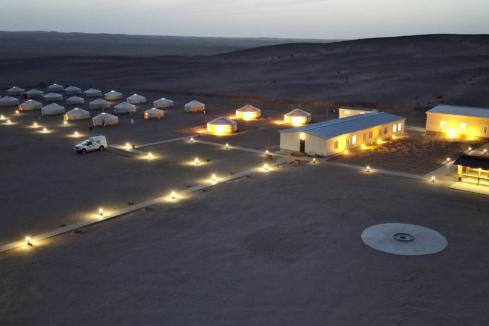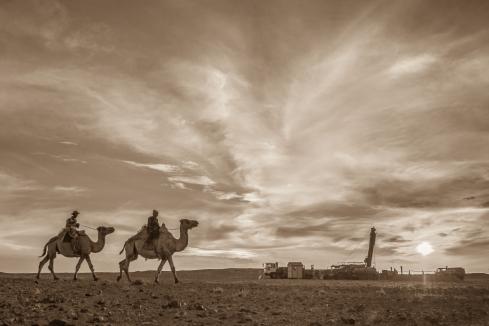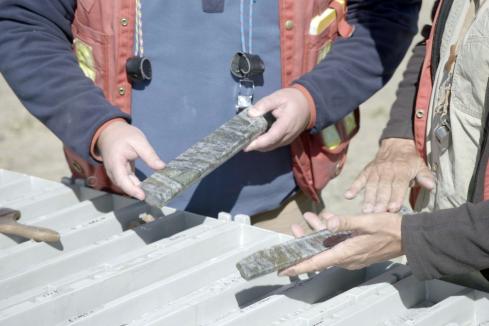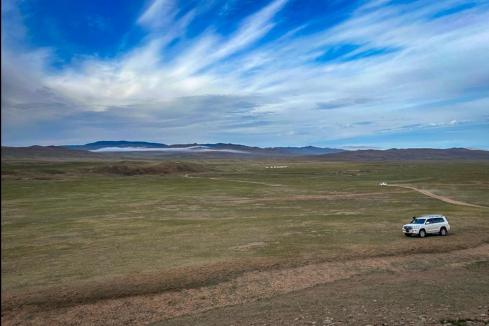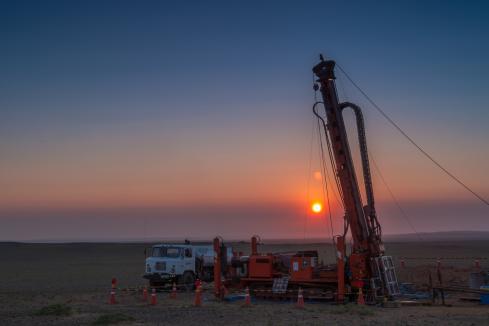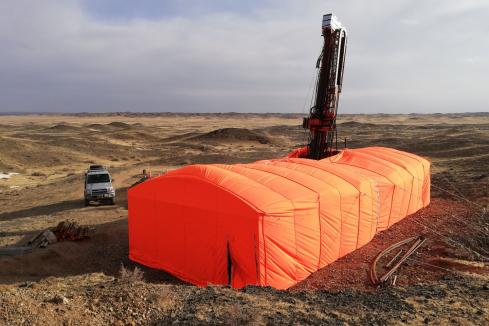Billionaire geologist Robert Friedland’s Oyu Tolgoi copper-gold discovery in Mongolia is of biblical proportions and just 120kms to its north west, ASX-listed Xanadu Mines is onto a copper-gold discovery that has already ticked over a billion-tonne resource and counting. Xanadu’s Kharmagtai deposit is now taunting the market with its potential in a region that is capable of brewing ridiculous sized mineral deposits like Oyu Tolgoi.

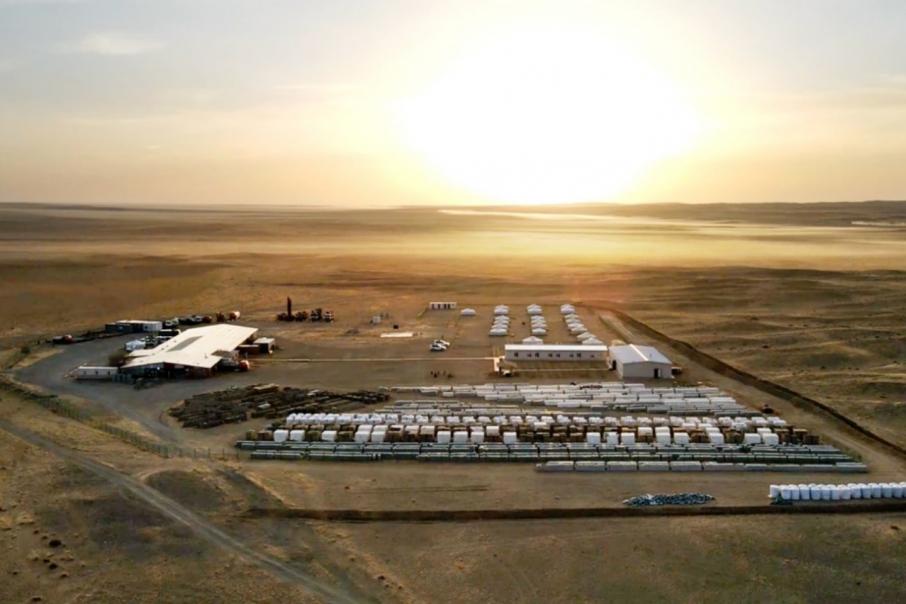
Geologist and mining entrepreneur Robert Friedland has a reputation for going where no man would go in search of mineral riches – a strategy that has paid off in the billions for him over the years. In the early 2000s his team discovered the Oyu Tolgoi copper-gold deposit in the Gobi Desert of Mongolia that is of biblical proportions. The discovery would eventually lead to the largest financial undertaking ever contemplated in Mongolia’s history and some projections have it producing over half a billion tonnes of copper annually by the middle of the decade.
Now owned and operated by mining giant Rio Tinto, the Oyu Tolgoi mine has become a symbol of Mongolia’s potential as a mineral-rich province and just like the proverbial light globe that attracts the moths, Oyu Tolgoi has attracted a band of smaller capped hopefuls to the region in search of its sister deposit that many believe may still be lurking out in the Mongolian desert somewhere.
One company that has established itself in the vanguard of that band of hopefuls is Xanadu Mines who sought to create its own legacy in the South Gobi Desert back in 2016. The company unearthed the significant Kharmagtai copper-gold deposit just two short years later which today taunts the market with its potential in a region that is capable of brewing deposits like Oyu Tolgoi. In fact in geological terms, Xanadu’s Kharmagtai discovery is only a good tennis ball throw – or 120kms - to the north west of Rio’s Oyu Tolgoi. Notably the company says Kharmagtai is still open along strike and at depth which is remarkable given that it has already thrown up a 1.1b tonne resource containing a whopping 3mt of copper and 8m ounces of gold.
A preliminary PEA Scoping Study has it delivering a serious 50,000 tonnes of copper a year and a company making 110,000 ounces of gold a year to boot and wait for it ... for at least 30 years.
The Kharmagtai deposit is one of the largest undeveloped copper deposits listed on the ASX and potentially one of the largest globally, with commodity equities research firm MST Access noting in a recent research report:
“XAM is advancing as a potentially globally significant producer of copper and gold, and the senior leadership team has significant mining industry experience. The underlying commodity exposure provides a highly favourable outlook in our view.”
MST says Kharmagtai is shaping up to be an extremely low cost, long life mine. The company says it is targeting an initial all in sustaining cost of US$1.02 per pound of copper for the first five years and the project will likely spit out around US$3.4b in free cashflow over its initially contemplated mine life.
Xanadu estimates it should be able to bring 200,000 tonnes of copper and 500,000 ounces of gold to market in the first five years of production. After this, production is set to increase to 50ktpa of copper and 110ktpa gold with the AISC increasing to about US$1.87/lb for the remaining 25 years of the mine life.
MST Access also suggests some exploration upside, adding “…further exploration upside is likely to provide the greatest opportunity to delineate higher-grade components which can increase metal production rates and reduce unit costs for the same mill throughput and provide increased upfront cashflows to further improve the economics of the project.”
Xanadu is not struggling for money either having attracted the interest of Chinese copper giant Zijin Mining Group. The parties have formed a joint venture to fund the next steps to bring the Kharmagtai project to life.
The first phase of funding saw Zijin take a 9.99 per cent stake in the company. With FIRB and shareholder approval under its belt, Xanadu is now only waiting on approval from the Chinese government to trigger stage two funding, that will see Xanadu add $7.2 million to the coffers, and Zijin increase its stake in the company to 19.99 per cent.
In phase three of the funding, Zijin will part with another US$35 million.
The final approval from the People’s Republic of China is expected any day now, which will trigger phase two and then phase three within ten days of approval.
Zijin’s investment also provides Xanadu with a strategic partner with significant experience in the mining industry and the resources to bring a project of this size online. This is a major vote of confidence in Kharmagtai and a testament to it’s potential.
MST Access drew attention to this relationship in its report saying of Zijin, the world’s sixth largest global miner; “this partner brings not only the financial ability and technical expertise to get a project like this to the next stage, but also the logistical link to end markets which are “crucial to scale a porphyry project successfully into production.”
With funding secured, Xanadu will now invest heavily in further exploration in the South Gobi Desert and will look to develop addition targets around Kharmagtai whilst also continuing to develop its 100 per cent owned Red Mountain copper-gold project, also in Mongolia which is still at an early stage.
When phase three funding finally kicks in, Xanadu will push Kharmagtai into high gear by completing a pre-feasibility study, which is due in 2024.
Some 30,000m of infill drilling is to be completed at Kharmagtai this year and the resultant data will feed into a maiden ore reserve to be delivered when the PFS is completed.
Kharmagtai is one of the few large scale, long-life, low-cost copper deposits in the world that can be developed within 5 years, placing Xanadu in the box seat as the world starts an inevitable scramble for copper in order to keep up with the electric vehicle juggernaut.
The declining trend of copper discoveries, lower copper ore grades and the shortage of new projects to replace current production levels has caught the attention of industry experts. S&P Global is just one which has predicted there will be a copper deficit starting in 2026 that will last until at least 2030.
The analysis from S&P Global highlights the significance of Kharmagtai as it is one of the few global, near term producers with the potential for enormous scale.
Whilst the South Gobi Desert region that houses Xanadu’s Kharmagtai project was initially considered to be largely devoid of supporting infrastructure in the early days of the Friedland discovery, that does not appear to be the case now. There is now a railway line just 12km from the project, power lines in sight and nearby transport links to the Mongolian/Chinese border.
In an interview with MST Access, Xanadu Mines' Vice President of Exploration Andrew Stewart pointed to the untapped potential of the South Gobi Desert, emphasising Xanadu was only getting started. He said:“Now we’ve put together a project [that] really lets us take the gloves of us when it comes to exploration as we have no downside risk…now we can really go after the discoveries…we’re looking for a higher, hotter part of the system. We know the grade is increasing at depth.”
Stewart added that with some cash in the bank and a major mining partner, there was still some 40km to explore at Kharmagtai and the other nascent project, Red Mountain. He says Xanadu can focus on “sticking holes in the ground” as it works on shoring up more prospects in the region.
The PFS is set to take 18 months and early site works are slated for 2025. If all goes to plan, the first batch of copper concentrate could hit the market by 2027 according to management.
There is always a slight twinge of excitement that involuntarily transgresses ones lower gut when a sizable discovery is made in the vicinity of another existing discovery that is recognised to have biblical proportions.
It remains to be seen just where Kharmagtai will finish up as a copper-gold discovery. However one thing seems certain, with a billion tonne resource already to its name and an owner that has Chinese cash flowing in and a penchant for spending it in the ground, this is not likely to be one of the small ones.
Is your ASX-listed company doing something interesting? Contact: matt.birney@businessnews.com.au






